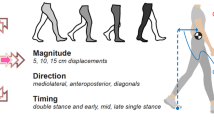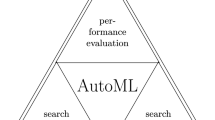Abstract
Purpose
With the advent of robot-assisted surgery, the role of data-driven approaches to integrate statistics and machine learning is growing rapidly with prominent interests in objective surgical skill assessment. However, most existing work requires translating robot motion kinematics into intermediate features or gesture segments that are expensive to extract, lack efficiency, and require significant domain-specific knowledge.
Methods
We propose an analytical deep learning framework for skill assessment in surgical training. A deep convolutional neural network is implemented to map multivariate time series data of the motion kinematics to individual skill levels.
Results
We perform experiments on the public minimally invasive surgical robotic dataset, JHU-ISI Gesture and Skill Assessment Working Set (JIGSAWS). Our proposed learning model achieved competitive accuracies of 92.5%, 95.4%, and 91.3%, in the standard training tasks: Suturing, Needle-passing, and Knot-tying, respectively. Without the need of engineered features or carefully tuned gesture segmentation, our model can successfully decode skill information from raw motion profiles via end-to-end learning. Meanwhile, the proposed model is able to reliably interpret skills within a 1–3 second window, without needing an observation of entire training trial.
Conclusion
This study highlights the potential of deep architectures for efficient online skill assessment in modern surgical training.




Similar content being viewed by others
References
Roberts KE, Bell RL, Duffy AJ (2006) Evolution of surgical skills training. World J Gastroenterol WJG 12(20):3219
Reznick RK, MacRae H (2006) Teaching surgical skills changes in the wind. N Engl J Med 355(25):2664–2669
Aggarwal R, Mytton OT, Derbrew M, Hananel D, Heydenburg M, Issenberg B, MacAulay C, Mancini ME, Morimoto T, Soper N, Ziv A, Reznick R (2010) Training and simulation for patient safety. BMJ Qual Saf 19(Suppl 2):i34–i43
Birkmeyer JD, Finks JF, O’reilly A, Oerline M, Carlin AM, Nunn AR, Dimick J, Banerjee M, Birkmeyer NJ, (2013) Surgical skill and complication rates after bariatric surgery. N Engl J Med 369(15):1434–1442
Darzi A, Mackay S (2001) Assessment of surgical competence. BMJ Qual Saf 10(suppl 2):ii64–ii69
Bridgewater B, Grayson AD, Jackson M, Brooks N, Grotte GJ, Keenan DJ, Millner R, Fabri BM, Mark J (2003) Surgeon specific mortality in adult cardiac surgery: comparison between crude and risk stratified data. Br Med J 327(7405):13–17
Goh AC, Goldfarb DW, Sander JC, Miles BJ, Dunkin BJ (2012) Global evaluative assessment of robotic skills: validation of a clinical assessment tool to measure robotic surgical skills. J Urol 187(1):247–252
Aghazadeh MA, Jayaratna IS, Hung AJ, Pan MM, Desai MM, Gill IS, Goh AC (2015) External validation of global evaluative assessment of robotic skills (gears). Surg Endosc 29(11):3261–3266
Niitsu H, Hirabayashi N, Yoshimitsu M, Mimura T, Taomoto J, Sugiyama Y, Murakami S, Saeki S, Mukaida H, Takiyama W (2013) Using the objective structured assessment of technical skills (osats) global rating scale to evaluate the skills of surgical trainees in the operating room. Surg Today 43(3):271–275
Reiley CE, Lin HC, Yuh DD, Hager GD (2011) Review of methods for objective surgical skill evaluation. Surg Endosc 25(2):356–366
Vedula SS, Ishii M, Hager GD (2017) Objective assessment of surgical technical skill and competency in the operating room. Ann Rev Biomed Eng 19:301–325
Moustris GP, Hiridis SC, Deliparaschos KM, Konstantinidis KM (2011) Evolution of autonomous and semi-autonomous robotic surgical systems: a review of the literature. Int J Med Rob Comput Assist Surg 7(4):375–392
Cheng C, Sa-Ngasoongsong A, Beyca O, Le T, Yang H, Kong Z, Bukkapatnam ST (2015) Time series forecasting for nonlinear and non-stationary processes: a review and comparative study. IIE Trans 47(10):1053–1071
Klonowski W (2009) Everything you wanted to ask about eeg but were afraid to get the right answer. Nonlinear Biomed Phys 3(1):2
Reiley CE, Hager GD (2009) Task versus subtask surgical skill evaluation of robotic minimally invasive surgery. In: International conference on medical image computing and computer-assisted intervention. Springer, pp 435–442
Kassahun Y, Yu B, Tibebu AT, Stoyanov D, Giannarou S, Metzen JH, Vander Poorten E (2016) Surgical robotics beyond enhanced dexterity instrumentation: a survey of machine learning techniques and their role in intelligent and autonomous surgical actions. Int J Comput Assist Radiol Surg 11(4):553–568
Judkins TN, Oleynikov D, Stergiou N (2009) Objective evaluation of expert and novice performance during robotic surgical training tasks. Surg Endosc 23(3):590
Liang K, Xing Y, Li J, Wang S, Li A, Li J (2018) Motion control skill assessment based on kinematic analysis of robotic end-effector movements. Int J Med Rob Comput Assist Surg 14(1):e1845-n/a. https://doi.org/10.1002/rcs.1845
Trejos AL, Patel RV, Malthaner RA, Schlachta CM (2014) Development of force-based metrics for skills assessment in minimally invasive surgery. Surg Endosc 28(7):2106–2119
Poursartip B, LeBel M-E, Patel R, Naish M, Trejos AL (2017) Analysis of energy-based metrics for laparoscopic skills assessment. IEEE Trans Biomed Eng 65(7):1532–1542
Ershad M, Koesters Z, Rege R, Majewicz A (2016) Meaningful assessment of surgical expertise: semantic labeling with data and crowds. In: International conference on medical image computing and computer-assisted intervention. Springer, pp 508–515
Sharon Y, Lendvay TS, Nisky I (2017) Instrument orientation-based metrics for surgical skill evaluation in robot-assisted and open needle driving. arXiv preprint arXiv:1709.09452
Shackelford S, Bowyer M (2017) Modern metrics for evaluating surgical technical skills. Curr Surg Rep 5(10):24
Fard MJ, Ameri S, Darin Ellis R, Chinnam RB, Pandya AK, Klein MD (2018) Automated robot-assisted surgical skill evaluation: predictive analytics approach. Int J Med Rob Comput Assist Surg 14(1):e1850. https://doi.org/10.1002/rcs.1850
Stefanidis D, Scott DJ, Korndorffer JR Jr (2009) Do metrics matter? Time versus motion tracking for performance assessment of proficiency-based laparoscopic skills training. Simul Healthc 4(2):104–108
Chmarra MK, Klein S, de Winter JC, Jansen F-W, Dankelman J (2010) Objective classification of residents based on their psychomotor laparoscopic skills. Surg Endosc 24(5):1031–1039
Vedula SS, Malpani A, Ahmidi N, Khudanpur S, Hager G, Chen CCG (2016) Task-level vs. segment-level quantitative metrics for surgical skill assessment. J Surg Educ 73(3):482–489
Poursartip B, LeBel M-E, McCracken LC, Escoto A, Patel RV, Naish MD, Trejos AL (2017) Energy-based metrics for arthroscopic skills assessment. Sensors 17(8):1808
Forestier G, Petitjean F, Senin P, Despinoy F, Jannin P (2017) Discovering discriminative and interpretable patterns for surgical motion analysis. In: Conference on artificial intelligence in medicine in Europe. Springer, pp 136–145
Brown JD, OBrien CE, Leung SC, Dumon KR, Lee DI, Kuchenbecker KJ, (2017) Using contact forces and robot arm accelerations to automatically rate surgeon skill at peg transfer. IEEE Trans Biomed Eng 64(9):2263–2275
Zia A, Essa I (2018) Automated surgical skill assessment in RMIS training. Int J Comput Assist Radiol Surg. https://doi.org/10.1007/s11548-018-1735-5
Tao L, Elhamifar E, Khudanpur S, Hager GD, Vidal R (2012) Sparse hidden markov models for surgical gesture classification and skill evaluation. In: IPCAI. Springer, pp 167–177
LeCun Y, Bengio Y, Hinton G (2015) Deep learning. Nature 521(7553):436–444
Schmidhuber J (2015) Deep learning in neural networks: an overview. Neural Netw 61:85–117
Silver D, Huang A, Maddison CJ, Guez A, Sifre L, van den Driessche G, Schrittwieser J, Antonoglou I, Panneershelvam V, Lanctot M, Dieleman S, Grewe D, Nham J, Kalchbrenner N, Sutskever I, Lillicrap T, Leach M, Kavukcuoglu K, Graepel T, Hassabis D (2016) Mastering the game of go with deep neural networks and tree search. Nature 529(7587):484–489
Graves A, Mohamed A-R, Hinton G (2013) Speech recognition with deep recurrent neural networks. In: 2013 IEEE international conference on acoustics, speech and signal processing (ICASSP). IEEE, pp 6645–6649
Esteva A, Kuprel B, Novoa RA, Ko J, Swetter SM, Blau HM, Thrun S (2017) Dermatologist-level classification of skin cancer with deep neural networks. Nature 542(7639):115–118
Rajpurkar P, Hannun AY, Haghpanahi M, Bourn C, Ng AY (2017) Cardiologist-level arrhythmia detection with convolutional neural networks. arXiv preprint arXiv:1707.01836
DiPietro R, Lea C, Malpani A, Ahmidi N, Vedula SS, Lee GI, Lee MR, Hager GD (2016) Recognizing surgical activities with recurrent neural networks. In: International conference on medical image computing and computer-assisted intervention. Springer, pp 551–558
Gao Y, Vedula SS, Reiley CE, Ahmidi N, Varadarajan B, Lin HC, Tao L, Zappella L, Béjar B, Yuh DD, Chen CCG, Vidal R, Khudanpur S, Hager GD (2014) JHU-ISI gesture and skill assessment working set (JIGSAWS): a surgical activity dataset for human motion modeling. In: MICCAI workshop: M2CAI, vol 3, p 3
Längkvist M, Karlsson L, Loutfi A (2014) A review of unsupervised feature learning and deep learning for time-series modeling. Pattern Recognit Lett 42:11–24
Gamboa JCB (2017) Deep learning for time-series analysis. arXiv preprint arXiv:1701.01887
Nair V, Hinton GE (2010) Rectified linear units improve restricted Boltzmann machines. In: Proceedings of the 27th international conference on machine learning (ICML-10), pp 807–814
Chollet F (2015) Keras. https://keras.io. Accessed 12 Dec 2017
Li M, Zhang T, Chen Y, Smola AJ (2014) Efficient mini-batch training for stochastic optimization. In: Proceedings of the 20th ACM SIGKDD international conference on knowledge discovery and data mining. ACM, pp 661–670
Kingma D, Ba J (2014) Adam: a method for stochastic optimization. arXiv preprint arXiv:1412.6980
Srivastava N, Hinton G, Krizhevsky A, Sutskever I, Salakhutdinov R (2014) Dropout: a simple way to prevent neural networks from overfitting. J Mach Learn Res 15(1):1929–1958
Wu H, Gu X (2015) Max-pooling dropout for regularization of convolutional neural networks. In: International conference on neural information processing. Springer, pp 46–54
Ahmidi N, Tao L, Sefati S, Gao Y, Lea C, Haro BB, Zappella L, Khudanpur S, Vidal R, Hager GD (2017) A dataset and benchmarks for segmentation and recognition of gestures in robotic surgery. IEEE Trans Biomed Eng 64(9):2025–2041
Krizhevsky A, Sutskever I, Hinton GE (2012) Imagenet classication with deep convolutional neural networks. In: Proceedings of the 25th international conference on neural information processing systems. Curran Associates Inc., NIPS, vol 1, pp 1097–1105
He K, Zhang X, Ren S, Sun J (2016) Deep residual learning for image recognition. In: Proceedings of the IEEE conference on computer vision and pattern recognition, pp 770–778
Cui Z, Chen W, Chen Y (2016) Multi-scale convolutional neural networks for time series classification. arXiv preprint arXiv:1603.06995
Le Guennec A, Malinowski S, Tavenard R (2016) Data augmentation for time series classification using convolutional neural networks. In: ECML/PKDD workshop on advanced analytics and learning on temporal data
Um TT, Pfister FM, Pichler D, Endo S, Lang M, Hirche S, Fietzek U, Kulić D (2017) Data augmentation of wearable sensor data for Parkinsons disease monitoring using convolutional neural networks. In: Proceedings of the 19th ACM international conference on multimodal interaction. ACM, pp 216–220
Sammut C, Webb GI (2011) Encycl Mach Learn. Springer, Berlin
Kumar R, Jog A, Malpani A, Vagvolgyi B, Yuh D, Nguyen H, Hager G, Chen CCG (2012) Assessing system operation skills in robotic surgery trainees. Int J Med Rob Comput Assist Surg 8(1):118–124
Sun C, Shrivastava A, Singh S, Gupta A (2017) Revisiting unreasonable effectiveness of data in deep learning era. In: 2017 IEEE international conference on computer vision (ICCV). IEEE, pp 843–852
Dockter RL, Lendvay TS, Sweet RM, Kowalewski TM (2017) The minimally acceptable classification criterion for surgical skill: intent vectors and separability of raw motion data. Int J Comput Assist Radiol Surg 12(7):1151–1159
Acknowledgements
This work is supported by National Science Foundation (NSF#1464432).
Author information
Authors and Affiliations
Corresponding author
Ethics declarations
Conflict of interest
The authors declared that they have no conflict of interest.
Ethical approval
For this type of study formal consent is not required.
Informed consent
This articles does not contain patient data.
Rights and permissions
About this article
Cite this article
Wang, Z., Majewicz Fey, A. Deep learning with convolutional neural network for objective skill evaluation in robot-assisted surgery. Int J CARS 13, 1959–1970 (2018). https://doi.org/10.1007/s11548-018-1860-1
Received:
Accepted:
Published:
Issue Date:
DOI: https://doi.org/10.1007/s11548-018-1860-1




